Each week, we’ll interview one of our experienced Finance Officers for a brief question and answer session about something interesting from the week, along with tips and tricks to make your finance process easier, and their unique perspective on the industries and customers we work with.

This week, we caught up with George Vandel in our Sioux Falls office who talked about a challenging deal, and how customers in a rush can speed up parts of the process by taking matters into their own hands.
Q: Hi George! I know that you said that you had had a customer recently that kind of fit the mold for somebody that was a little more difficult to fund, so what exactly about them fit that mold?
A: So, the company is kind of a general contractor – framing, roofing, home construction – in Phoenix that had originally incorporated in 2012, and had moved to Phoenix, AZ in 2014, and that’s what we had for Secretary of State. The owner scored a 675, however, he did have a bankruptcy in 2013. He did have some good comparable installment debt, but most of that was before the bankruptcy. In terms of true established credit since the bankruptcy was very low. That’s something that underwriting is really going to pay attention to after a bankruptcy – what have you done for me lately in terms of building credit, and he just didn’t have a ton.
Q: Upon seeing that, what were the first things you wanted to look for to make it easier to get the deal done?
A: Definitely trying to get some kind of bank and tax information at that point. Could you have tried to find a potential app only solution? Maybe. But in a situation like this where you know you have hurdles, it makes sense to at least, if nothing else, try to understand what 2018 looks like and what their bank statements look like. We did get bank statements and it did show low 6-figure cash flow, but beginning/ending balances ranged anywhere from a few dollars to 30-40 grand. Even then, you could say that the overall cash flow strength of the business in terms of beginning/ending balances wasn’t spectacular either. Good money going in, but a lot coming out at the same time, right? That didn’t hurt, but that probably didn’t help as much as much as I would have liked it to. The 2018 internal, not audited statements, showed that he was an 18-million-dollar company, and had net income of around 1 million bucks. You have to be a little tentative about how valid a lot of that is until you can see the year’s prior tax returns to see if that was something that was at all around normal for them.
So, getting to the buying process, in talking with him, the initial response from him was that I’m going to shop, and we’ll worry about when I need something. Then, a week later he said that he wanted to bid at an auction, and have it paid tomorrow, and we didn’t have an approval or anything for a guy that had a bankruptcy. There were a number of things you could look at that showed this was a pretty challenging deal.
Q: Was this something he was aware about, like what the hurdles were going to be, or did you need to inform him? Let him know it would be a little more difficult moving forward?
A: After the initial conversations, obviously we knew about the bankruptcy piece, and financially, he made it out like he was very strong – internally that was validated, but nothing concrete by any means. Said the bank was great – forgot to mention ending balance one month was 40 bucks. In all honesty, he probably doesn’t see any issue with it. He has 6 figures going in and out. Through the process I try to make sure we don’t over-promise any type of expectation. I really focus on the fact that we’re doing whatever we can to make it work. We were very upfront with what the options would probably look like in terms of mid-20s type buy rate, sell rates in the 30 area, which is because of everything we saw – we also clarified that was IF we could even get it done, and set expectations for what would be realistic – which he was fine with.
Q: What were the final things that helped you get through with the funding source? What were the positives that helped this eventually get through?
A: Again, you know, if you do look at his history of credit, he did have a number of very good paid installments that were sizable – 50-grand, 70-grand. His bank statements do show that he is not a small company when you’re averaging 200-grand in and out a month. If you are a credit team, and you are giving stock to the internally prepared statements, then that would have made this very appealing. He did provide proof that other collections accounts were paid off in remedy, which alleviated a couple concerns, but truth be told, I was actually fairly shocked we could even get him approved due to the myriad of things that made this very, very difficult.
Q: Let’s talk about that time frame. Did you run into any hurdles? Was it down to the wire? Plenty of time? How did that work out?
A: The tough part was, the place that needed to get paid was an auction company. They don’t have a ton of patience, reasonable so, they’re there to sell equipment at an auction and then you have a certain time window to pay it, so when he approached me saying yes, I want to make this happen to when we got it funded, it was close to three weeks. Reasons for that, a lot of it was navigating a very challenging credit. There were a handful of sources we did approach, that did ask questions, that did take time, that did decline. So, you know, it takes 3 or 4 days at one bank, 3 or 4 days at another, getting additional information, and then there is additional time needed for the customer to gather his information. All the while we’re trying to keep the auction company at bay so that they don’t sell it to the next bidder, and so we did have to navigate those waters very gently for the course of about a week to get it funded.
Q: And so, for certain other instances, if someone has a credit profile like this, maybe the auction isn’t the way to go?
Well, yeah, yeah. Especially because it seemed like every rock we turned over showed other hurdles. That was the real kicker, because we were able to address everything we could see right up front, but it was the things we couldn’t see that took time to navigate, right? So, we navigated enough of it ahead of time that did take probably a week, just to get the information from him – the bank statements, the financials, the explanations for write-up, etc. and then questions banks would ask that you had to get answered, and then relaying that information does take time. And then ultimately, the place that wanted to do it found even more hurdles that took even longer to overcome (calling a cell phone to get a collection paid, etc.) and those things did take time.
Now, from the time we issued documents to the time we funded it, it actually went very smooth, he returned documents on a Monday, and we funded it on that Wednesday, so that aspect of it all can go very smoothly. The kicker is we try to, on these types of deals, try to explain as much as we possibly can for what we see, but you know we always try to make the customer aware the nature of the beast, that there will potentially be other items we’re not recognizing as potential hurdles that we’ll need to overcome. And as long as we can do that in an appropriate time frame, and they’re understanding of that, we can navigate it. We do have to set appropriate expectations for all parties involved, including in this case, the auction company, where, you know I told him it was going to take up to 48 hours to fund it after we got the signed paperwork just to give us a day’s buffer. There were delays on the customer’s side too with getting the docs back to us, but we just want to make sure that we always give some leeway so that we never give any inappropriate time frames, if that makes sense.
Q: With that expectation with the equipment seller, how is that navigated on our end, on their end, when there is a situation where things are going to take a little more time? Is there anything that sticks out to you in this situation or most situations when there is a bit of a delay on how to navigate that relationship?
A: Yeah, what I don’t want to do is share any information that is intimate to the borrower’s credit profile at all, business or personal, so what I try to mention is through our years of experience, we’re very good at navigating that B to C credit space, and for those customers, a lot of the abilities for us to do this in an expedited manner does come with the customer’s participation, and we can only move as quickly as we get information back from the customer. As an overall process, it’s going to take a bit longer than with an A credit because there are more checks and balances that need to happen, so any time I’m dealing with these in my initial contacts with the vendor, I mention that it can happen in as little as a few days, but more than likely it can take up to a week to get paid. That’s not exactly what they want to hear, but once they hear it, we set the best expectations we can because they still want to sell this stuff, right? And I wasn’t introduced to the auction company as it relates to needing to communicate with them, until will had a formal approval that did not have any contingencies. I didn’t want to get involved with the auction company until I knew I had a very clean approval. I left communication up to the customer prior to me doing it, because I didn’t want to start promising anything before I knew we were good to go.
Q: So, for anybody in this situation, they just need to be prepared if they do have a more challenged profile, that some of that will kind of fall into their hands, it’s not a passive thing, they actually have to be sort of active in the process at that point?
A: Exactly, and I try to put more of that on the customer, number one, because then I know he has an urgency to complete the transaction. In some cases, we will have folks that will take 3 days to send in the documents, or we’re waiting on smaller items, and that can really hinder the process. It’s harder to blame the process when you see delays like this, but putting it in the customer’s hands when there is an accelerated time table, you’re really putting the ability to succeed in their hands.
Next week we will check in with another one of our finance officers for another Q&A. Stay up to date and learn more from our valuable resources at www.AmericanEFS.com/The-Bottom-Line






